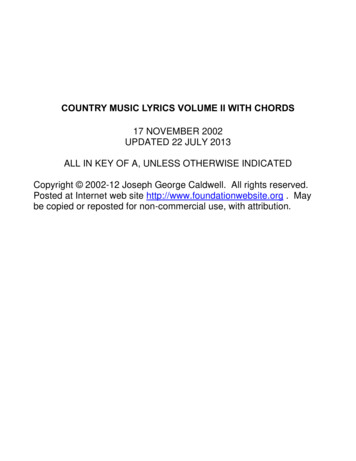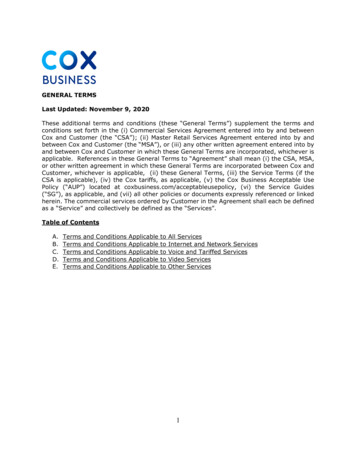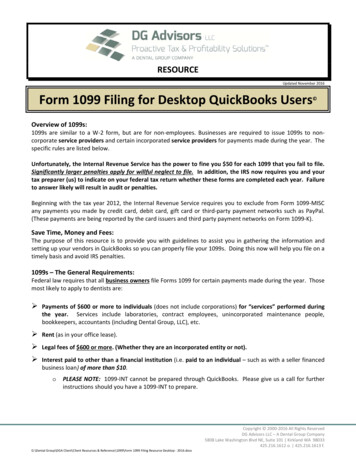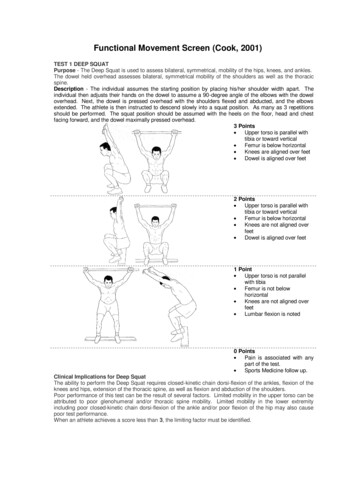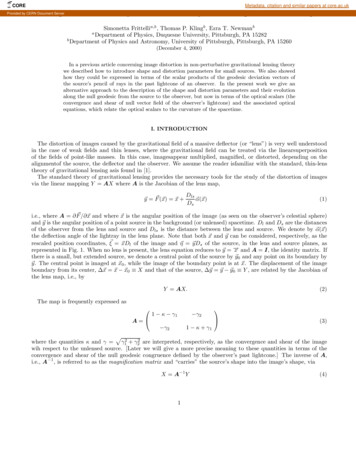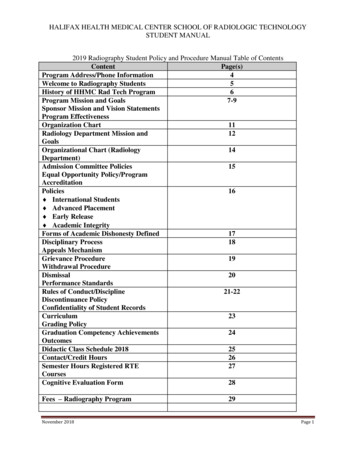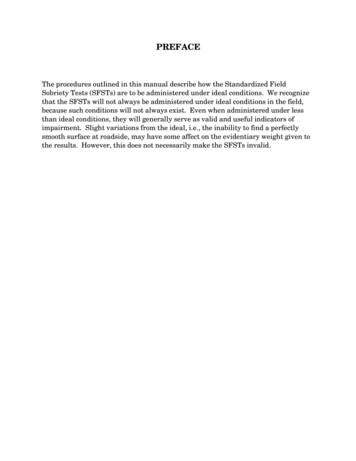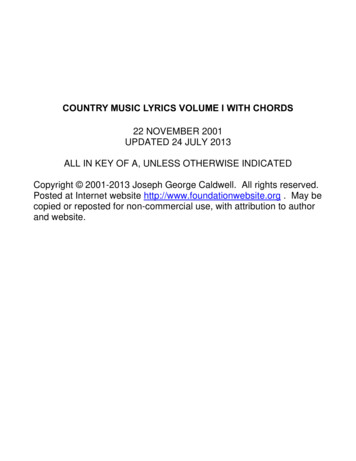
Transcription
COUNTRY MUSIC LYRICS VOLUME I WITH CHORDS22 NOVEMBER 2001UPDATED 24 JULY 2013ALL IN KEY OF A, UNLESS OTHERWISE INDICATEDCopyright 2001-2013 Joseph George Caldwell. All rights reserved.Posted at Internet website http://www.foundationwebsite.org . May becopied or reposted for non-commercial use, with attribution to authorand website.
FOREWORDThe songs (words and some chords) presented here are intended tofacilitate learning to play the guitar by ear (per the article, How to Playthe Guitar by Ear (for Mathematicians and Physicists), at Internetwebsite http://www.foundationwebsite.org. The songs are mainlypopular "country and western" ones, with some rock and roll, folk, andgospel songs included. (Perhaps "classic" is a better descriptor than"popular," since most of the songs are from the 1950s.) If a song hasno chords indicated, then the student should (if he knows the melody)be able to play such a song in any of the keys that are natural for theguitar, i.e., A, C, D, E, and G (and perhaps F). Many of these songsinvolve just three chords (I, IV and V). If a single chord is indicatedsomewhere in a song (as an assist to the student), and the key of thesong is not specified, it is the chord assuming that the song is beingplayed in the key of A.For songs that are more difficult, I have indicated suggested chords tobe used, in a key that suits my own vocal range. The student maywish to transpose these songs to a different key. These are notnecessarily the "best" chords for the song -- just the ones that I foundeasy or natural to use. For songs that have no chords indicated,practice singing the song in several keys, and select the key that suitsyour vocal range best. I play a majority of the songs in this collectionin the key of A, many in G, and less in E, D and C.For each song, the first line specifies the title. If there is an alternativetitle, that is specified on the second line. Next are specified the mostwell-known singer(s) of the song (in the US) and the author(s). If asingle name appears, either that person is both the principal singerand the author, or I only know one or the other.I have assembled a fairly large number of songs into this "practice"collection, since in order for you to be able to play a song by ear youmust know the melody (none of the songs presented here include themusic for the melody), and the number of songs of the collection forii
which you know the melody may be small. Most of the songs in thiscollection were popular in the 1950s, when I used to listen to theradio.If you do not recognize very many of the songs here, then you shouldcompile your own portfolio of lyrics of songs that you do know.Listening to the radio is not so good for recording lyrics, since youcannot "replay" the song (unless you tape it). There are a largenumber of Internet web sites that contain lyrics, for every kind ofmusic. Many of the songs contain chords as well. Another source oflyrics and chords (and music for the melody) are "fake" books,available in local music stores.When learning to play by ear, it is important to have lyrics for a fairlylarge number of songs. If you concentrate on just a few songs, youwill memorize the chord sequence. Eventually, you will memorize itanyway, but in the beginning, when you are learning to play by ear, itis best not to memorize it. It is important to develop an "ear" (a "feel,"an intuition, a sense) for which chord should be used. To do this, it isimportant to try playing a song in several different keys. And it ishelpful to have a large selection of songs, so that you do not spendtoo much time on a single song (and memorize it too soon). Whenlearning to play by ear, it is a good idea to cycle through the book,rather than selecting just a few songs. Play each song once or a fewtimes, until you do not make mistakes. Later, when your skillsimprove, you will want to settle on a particular key for a song, andlearn to sing and play it very well. You will then be able to perform thesong well.If your voice quality is not very good, don't worry about that. Somevery popular singers have terrible voices. Each voice, like eachflower or sunset, is different, and enjoyed for its own qualities by thelisteners. Your voice and vocal range and ability to sing in tuneimprove rapidly with practice. Listeners respond more to yourenthusiasm and emotion than to the timbre of your voice.iii
When singing before a group, it is very helpful to have memorized thelyrics. The problem with reading the lyrics from a sheet is that you donot have much eye contact with the listeners, and it detractssubstantially from the quality/rapport of the performance. After youhave learned to play by ear, memorize a couple of dozen of yourfavorite songs (and some of the favorites of your friends), so that youare able to perform them without resorting to the hard copy. Do not,however, try to memorize lyrics when you are first learning to play byear. You have enough on your mind at the beginning, trying to playand sing at the same time. Also, when you first play before others,the natural excitement of performing before someone else may causeyou to forget the lyrics, no matter how well you have memorized them.Finally, if you read from the lyrics, you can, right away, play a largenumber of songs in an evening with friends -- far more than if you playfrom memory.If you are uncomfortable playing before a group, start out by playingbefore members of your family, and then close friends. You abilityand your confidence will increase rapidly with practice, and will soonfeel at ease playing before strangers.Playing with others (in an instrumental group) is very enjoyable.Making music with friends is as enjoyable as playing by yourself or forothers -- probably more enjoyable. Learning to play by ear issomething that you must do on your own, but as soon as you masterthe basic skills, look for others with similar interests, and playtogether. The ultimate goal of making music, of course, is forlisteners to appreciate it.Please note that, although a number of the songs presented here are"traditional" (i.e., in the public domain, uncopyrighted), most of themare copyrighted. This means that copies (hardcopy, electronic, etc.)of the song may not be made for commercial purposes. It is myunderstanding that if songs are not used for public paid performances,but just used for personal noncommercial use (e.g., as here, to assistlearning to play the guitar by ear), then a single copy may be made ofiv
the words and music. I am strongly in favor of the concept that anartist should reap the rewards of his creative talents, and I respectcopyright law. Please do not make or distribute copies of thesesongs, except for your own personal use. The point to presenting thiscollection of songs is to have available a good-sized set of songswithout chords (or with few chords), so that the student may learn tosing and play "easy" songs by ear, in any key. Commerciallypublished songs indicate the chords on the music, and they oftenspecify chords that are not appropriate for a guitar (e.g., too manychords, difficult chords, chords in keys that are not natural for aguitar). That type of music does not help the student learn to play byear. The point to presenting this collection is not to avoid payingcopyright fees -- it is to help you learn to play the guitar by ear.Thanks, and best of luck!Joseph George CaldwellClearwater, Florida22 November 2001Added Note, 17 May 2004:This volume is a revision containing chords for most songs. In asense, it is an “answer book” to accompany the earlier edition, whichomitted most chords. Please note that most of the chordingspresented here are very simple – what a new student would beexpected to devise. In most cases, they are quite adequate, andwould be what anyone would use to accompany singing. In somecases, however, more elaborate chordings are presented, becausethey sound so much better. For example, the song, “Love Letters inthe Sand” includes many more chords than the beginning studentwould be expected to devise.v
ContentsCOUNTRY MUSIC LYRICS VOLUME I WITH CHORDS . iFOREWORD . iiA DAISY A DAY. 1A DEAR JOHN LETTER . 2ADIOS AMIGO . 3AFTER SEVENTEEN DAYS ON THE ROAD . 4ALL FOR THE LOVE OF A GIRL . 8AMANDA . 9AMAZING GRACE . 10AM I LOSING YOU? . 12AM I THAT EASY TO FORGET? . 13A SATISFIED MIND . 15ARE YOU LONESOME TONIGHT? . 16ASHES OF LOVE . 18BACK HOME AGAIN . 19BATTLE HYMN OF THE REPUBLIC . 21BIG IRON . 23B.J. THE D.J. . 26BLUE CHRISTMAS . 28BLUE EYES CRYING IN THE RAIN . 29BORN TO LOSE. 30BOTTLE OF WINE . 31BOUQUET OF ROSES . 32BROWN-EYED HANDSOME MAN . 33BROWN-SKIN GIRL . 35BUMMING AROUND. 37CATTLE CALL . 38CHARLIE’S SHOES . 39CHATTANOOGIE SHOE SHINE BOY . 41CHEATING GAME . 42CINDY, OH CINDY . 43CITY LIGHTS . 44COLD, COLD HEART . 46COME A LITTLE BIT CLOSER . 48COOL WATER . 49vi
CRAZY ARMS . 51CROSS THE BRAZOS AT WACO . 52CRYSTAL CHANDELIERS . 53DARK MOON . 54DECK OF CARDS . 55DELLA AND THE DEALER . 58DETOUR . 60DEVIL WOMAN . 61DID SHE MENTION MY NAME? . 63DOES MY RING HURT YOUR FINGER? . 65DON’T BE ANGRY . 66DON'T DROP IT . 67DON’T EVER LOVE ME . 68DON'T WE ALL HAVE THE RIGHT TO BE WRONG NOW ANDTHEN? . 69DO WHAT YOU DO, DO WELL . 70DROP KICK ME, JESUS . 71EL CONDOR PASA (IF I COULD) . 72EL CONDOR PASA (IF I COULD) . 73ENGINE, ENGINE NUMBER NINE . 74EVERYBODY'S SOMEBODY'S FOOL . 75EVIL ON YOUR MIND . 76FADED LOVE . 77FEET . 78FOOL NUMBER ONE . 79FUNNY HOW TIME SLIPS AWAY . 80FRANKIE AND JOHNNY . 81FROM A JACK TO A KING . 83GHOST RIDERS IN THE SKY . 84GONNA FIND ME A BLUEBIRD . 86GOTTA TRAVEL ON . 87GOTTA TRAVEL ON
popular "country and western" ones, with some rock and roll, folk, and gospel songs included. (Perhaps "classic" is a better descriptor than "popular," since most of the songs are from the 1950s.) If a song has no chords indicated, then the student should (if he knows the melody) be able to play such a song in any of the keys that are natural for the guitar, i.e., A, C, D, E, and G (and .

